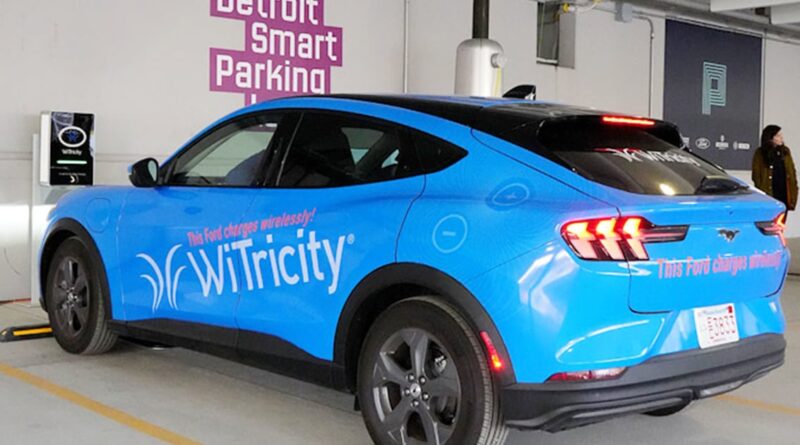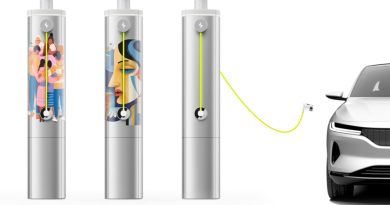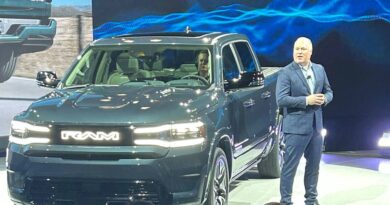Column: Wireless charging helps improve EV purchase consideration
After testing a wireless charging system made by WiTricity Corp., there’s no doubt in my mind that it is far better than any plug-in EV charger.
But that still might not be enough to ensure commercial success — at least right away.
A wireless charger eliminates many of the hassles and snags that are sapping the performance and reliability of plug-in chargers. There’s no button to press to open a charge port door. No plugs to deal with. No credit card information to input. Wireless charging can also make living with an EV easier for physically challenged drivers.
In a nutshell, the WiTricity charger works like this:
When a vehicle drives over a pad on the ground, it automatically “shakes hands” with the charger’s wall box. A charging pad on the ground converts the electricity it receives from the wall box into a magnetic field. A receiver under the vehicle captures the energy from the magnetic field and converts it into electricity that then flows into the vehicle’s battery pack.
Essentially, WiTricity’s system is a bigger, more powerful (and more advanced) version of the wireless chargers used for such things as cellphones and toothbrushes. The company has more than 1,300 patents, says Pamposh Zutshi, WiTricity’s senior director of product management.
The problem is the vast majority of chargers installed today are plug-in chargers. Businesses and municipalities that have already invested in plug-in chargers are not very likely to tear them out and replace them with a wireless system.
WiTricity executives say they know it is not easy to disrupt an established energy distribution system and they are taking a very focused and pragmatic approach.
“We’ve done a number of research projects – conducted independently — that demonstrate that consumers really want this technology,” Amy Barzdukis, WiTricity’s chief marketing officer, told me last week in a freezing Detroit garage where the system was being tested.
“What we’ve found is that when wireless charging is included in the vehicle, the intent to purchase increases 70 percent,” she said.
I can see that. With a wireless charger, nothing is required from the driver beyond the initial setup of the system.
In a Ford Mustang Mach E test vehicle, Zutshi eased the vehicle over the pad. A screen showed when to stop the vehicle at the moment the ground pad and vehicle receiver were aligned. About 20 seconds later, charging at Level 2 was underway. If there’s a downside, it’s a minor one. Wireless charging loses some efficiency compared to plug chargers. Zutshi said if 11 kilowatts are flowing out of the wall box about 10.2 kw will make it to the vehicle’s battery pack.
One reason why WiTricity is taking the long view is that most EVs need to be designed from the start to accept a wireless charging system. It is possible to retrofit current EVs, but the surgery required is extensive and likely very expensive. If an automaker decided to add wireless charging on a future vehicle, it would take about three years for it reach the market. WiTricity declined to provide prices for its system.
The company, an MIT spinoff based in Watertown, Mass., is transitioning from a startup to a revenue-generating company. Its wireless system is in production on two EVs sold in China (a large SUV, the HongQi E-HS9, and the Xiaoyu 2.0, an electric bus) and one in the Korean market, the Genesis GV60 crossover. And last year, WiTricity received a huge vote of confidence in its technology when Siemens, the German electronics giant, invested $25 million in the company and took a minority stake.
Fleet operators could be the earliest shot WiTricity has at selling its systems in volume. Still, it probably won’t be easy or quick cutting the electric charger cord.
Barzdukis and Zutshi said EV wireless charging will follow the same path of consumer acceptance as Wi-Fi did for computers.
“I worked at Microsoft for ages and was there when we made the transition from plugging your PC into the wall and into the Ethernet,” Barzdukis told me. “And we had laptops that you still plugged an Ethernet cable into the back. Those cables were part of the infrastructure and we dealt with it. But wireless just made so much more sense. What we see repeatedly is that when things can go wireless, they do.”
Source : Autonews.com




